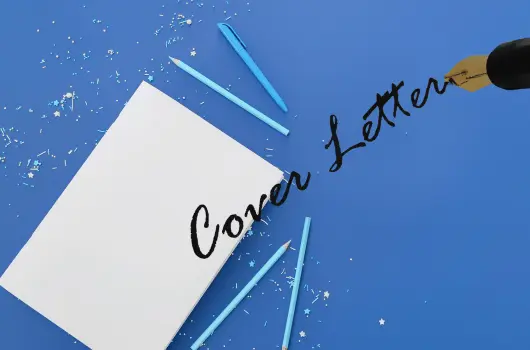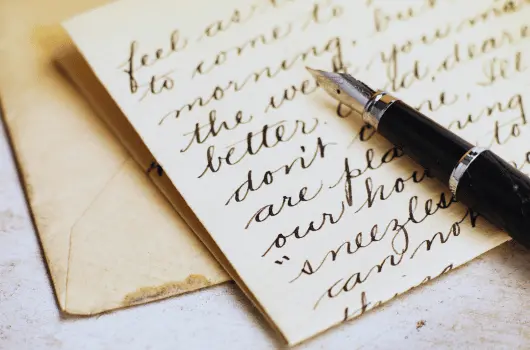
How to Write a Cover Letter as a New Teacher
When applying for a job, the first impression your potential employer will make about you is through your Resume and Cover letter. And this impression is crucial.
For you as a new teacher, a cover letter is your opportunity to show your passion, skills, and potential. But just showing it is not enough, you need to make an employer want to meet you.
In this article, you are going to discover every aspect of creating a standout cover letter. The one that has the potential to help you move to the next stage.
Identify the Purpose of Your Cover Letter

To begin with, your cover letter is a document that you send along with your resume when applying for a job.
It serves as a personal introduction you your employer. And gives you a chance to highlight your most relevant skills, experiences, and achievements.
You should adapt each cover letter for each job.
However, cover letters have a specific structure that serves important purposes. Let's look at it.
Introduction: Here you introduce yourself. Who you are and why you are writing. Or in other words, express interest in the position. You can mention the job you are applying for and how you found out about it.
Body: In the body of your cover letter, you write detailed information about why you are a great fit for the position. There you will connect your skills and experience with the job requirements.
And a closing part: It is a summary of your enthusiasm for the role. A call to action, like requesting an interview and providing your contact information.
We will go into more detail about the structure and what to write in each element a bit later. Now, let’s talk about the purpose of a cover letter.
As you have already noticed, your cover letter introduces you as a candidate and expresses your interest in the position. However, it also provides more context and personality to your resume.
You see when you simply send a resume, you provide a dry structured overview of yourself. Mainly people will spend 1-2 minutes maximum to scan it.
But the cover letter tells your story. It also stays in memory, as opposed to the resume.
The cover letter also demonstrates your motivation and enthusiasm for a specific school or district. And showcases what makes you unique and valuable as a potential teacher or tutor.
Before You Write

Before you start writing your cover letter, there is one very important step to do. This step is your research.
Start researching information about the school or district you are applying to. Understand their mission and values. Also, what are their recent initiatives and achievements?
In addition to the potential employer, read carefully the job description and requirements. And the name of the hiring manager or a recruiter.
This research will help you adapt your letter as much as possible and demonstrate your genuine interest in the school.
Structure Your Cover Letter

We have already gone through a rough structure of the cover letter in the beginning. Let’s now go through it in detail.
To begin with, a well-structured cover letter typically includes the following elements:
- Header. Where you specify your contact information and the date of application.
- Greeting. In this section, you personalize your greeting to the hiring manager or recruiter.
- Opening paragraph. This is the place where you include a strong introduction that will grab attention.
- Body paragraphs. Typically it is 2-3 paragraphs where you talk in detail about your qualifications and experience.
- Closing paragraph. A summary of the information in your cover letter. Also, here you ask for the interview invitation and thank the person for their attention.
- Professional sign-off. Your signature and full name.
Now, let's break down each of these elements in detail.
Cover Letter Header
Here is what you will need to include in the header to make your cover letter look professional:
- Your full name
- Address
- Phone number
- Email address
- Date
- Recipient's name and title
- School or district name and address
A practical example will look something like this:
The data below is completely invented and any match with a real person is a pure coincidence.
Jennifer Douglas
456 Maple Street, Apt 7B Greenfield, MT 67890 (555) 987-6543 | [email protected]
August 14, 2024
Ms. Jane Smith
Principal
Anytown Elementary School
456 Education Blvd, Greenfield, MT 67890
Cover Letter Greeting
Whenever possible, address your letter to a specific person. For this, you will need to do your little research, as we discussed.
If the job posting doesn't include a name, you can call the school to find out who's in charge of hiring.
If it is impossible to find a name, use a general greeting like “Dear Hiring Manager,” “Dear (School Name) Hiring Committee,”, or “Dear Sir or Madam,”.
Otherwise, use "Dear (Title) (Last Name)," such as "Dear Principal Smith,".
Cover Letter Opening Paragraph
When you are writing your opening paragraph you should include three things:
- Include the position you are applying for.
- Express your enthusiasm for the role. And,
- Briefly mention why you are a great candidate for the role.
Ok, enough of the theory, let’s see how we can structure it into an example.
Example: "I am writing to express my strong interest in the 5th-grade teaching position at Anytown Elementary School, as advertised on your district website. As a recent Elementary Education graduate, I want to inspire a love of learning in young minds. I am excited to bring my innovative teaching methods and dedication to student success to your esteemed school."
Cover letter Body Paragraphs
As I mentioned above, the body of your cover letter should be typically 2 or 3 paragraphs. It is the place where you explain and prove why you are an ideal candidate.
First paragraph
Let’s talk about what you can include in the first paragraph. Start with the education and training you had.
Discuss your educational background, and mention certifications and any relevant training you had.
When writing about education, make sure you align it with the needs and philosophy of the school.
For example: "My Bachelor's in Elementary Education from State University has given me a strong foundation in curriculum development, classroom management, and differentiated instruction." During my studies, I specialized in STEM education, which aligns perfectly with Anytown Elementary's focus on improving its science and technology programs. Additionally, I have completed training in trauma-informed teaching practices, which I believe will be valuable in creating a supportive and inclusive classroom environment.”
Second paragraph
In the second paragraph, you can mention your teaching experience and skills.
But what to write if you are a new teacher?
I am sure, even as a fresh graduate, you likely have relevant experiences. Think about any internships you had or volunteer work, even tutoring children in your neighborhood will also be great.
Focus on specific achievements and skills you have developed during that time. And remember, it is very important to align them with the required skills for the position.
For example: “Although I’m a recent graduate, I’ve gained valuable experience through my student teaching and volunteer work. During my internship at City Elementary School, I helped plan and teach lessons, which strengthened my classroom management skills and ability to engage students. Additionally, volunteering as a tutor at a local community center gave me experience in creating personalized learning plans and adjusting to different learning styles. These experiences have prepared me to bring enthusiasm, creativity, and a strong commitment to student success to the 5th-grade teaching position at Anytown Elementary School.
Third paragraph
In the third paragraph, write about your personal qualities and teaching philosophy.
When it comes to your personal qualities, focus on the ones that make you an effective teacher. Also, connect your teaching philosophy to the values and needs of the school.
What is a teaching philosophy? It is your personal beliefs about education and teaching. It shows your approach to teaching and learning. And how you plan to achieve your educational goals.
If you are not sure about your teaching philosophy yet, think about it. For sure, you will be able to formulate it and connect it to the philosophy of the school. Below is an example.
Example: “I believe every child has the potential to succeed, and it’s our job as teachers to help them unlock it. My teaching philosophy focuses on creating a supportive and engaging classroom where students feel safe to take risks and learn from their mistakes. I’m excited about Anytown Elementary’s focus on social-emotional learning because I think it’s essential for students’ overall growth. With my patience, creativity, and skill in building strong relationships with students, parents, and colleagues, I’m confident I can make a positive impact at your school."
Cover Letter Closing Paragraph
Wow, now comes the easiest part – the closing paragraph. You probably remember you need to make a summary here. And you are right.
Start by summarizing your excitement about the position. Also, thank the reader for their time and consideration. And the most important, ask for an interview.
For example: “I am excited about the possibility of bringing my passion for education, innovative teaching strategies, and commitment to student success to Anytown Elementary School. I would welcome the opportunity to discuss how my skills and experiences align with your needs. Thank you for your time and consideration. I look forward to speaking with you further about how I can contribute to your school community.”
Cover Letter Sign-off
There are many ways to end your letter. However, concentrate on professional and friendly options. For example, "Sincerely," "Best regards," or "Thank you," and your full name.
Cover Letter Formatting Tips

A pleasant look of your cover letter is as important as its content. Therefore, keep it short. Do not write a cover letter that is longer than one page.
Use a professional and easy-to-read font. Some examples include Arial, Times New Roman, Calibri, etc. Use 12 or 14-point font size and include white space with at least 1-inch margins.
Before sending your cover letter, it is important to proofread and edit it carefully. Usually, reading the text out loud will help you catch awkward phrasing and repetitive words.
Besides, use spelling and grammar checking tools, but do not rely on them entirely. You may ask someone else to read your cover letter for feedback. And check if you spelled all the names and details correctly.
Creating an effective cover letter, especially for a new teacher can be challenging. In general cover letters require time, effort, and attention to detail.
By following this structure, you will be well on your way to creating a compelling letter. Remember your cover letter is your chance to tell your story. Be unique and show your passion and experience no matter how little it is.
You will gain experience quickly. But, a strong passion, motivation, and the right mindset are key. They are a great start for teaching.
Good luck with your job search and happy writing.

Written by Liudmyla M.
Experienced Tutor with over 12 years of teaching both online and offline. Passionate about helping students achieve their goals through personalized and practical methods.

